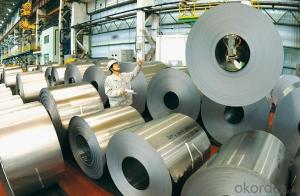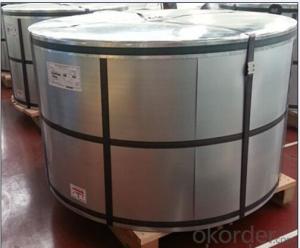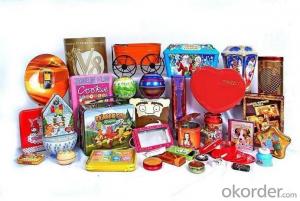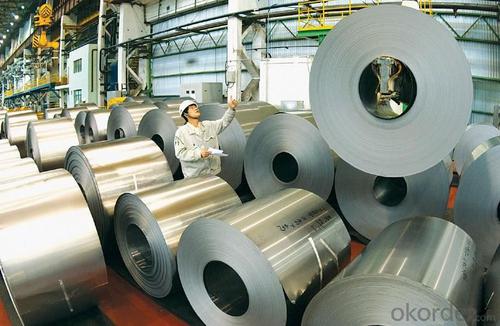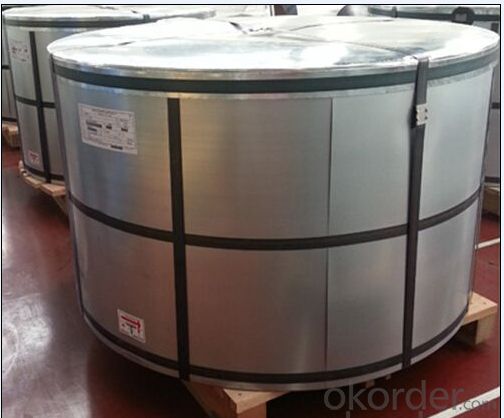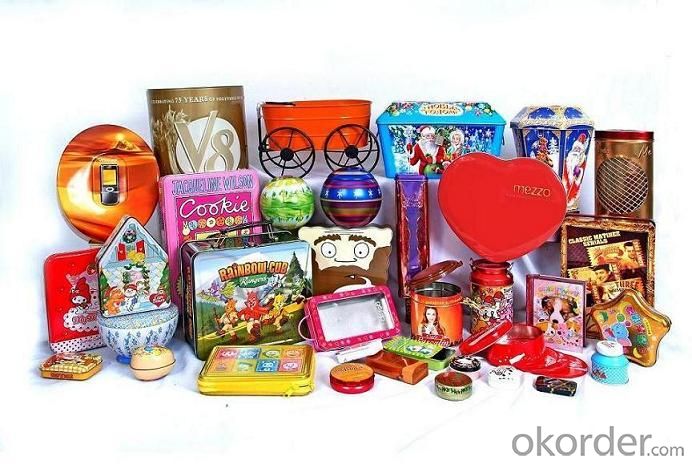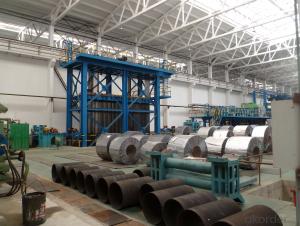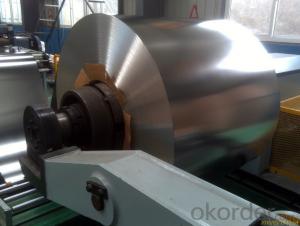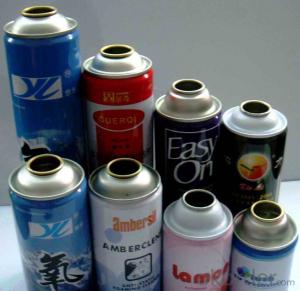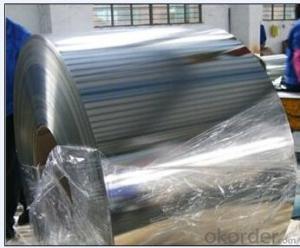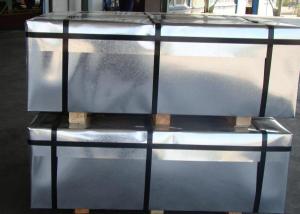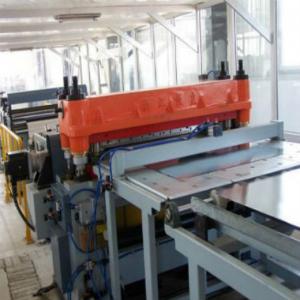Tinplate For Biscuits Cans, MR/SPCC Material,Prime Grade
- Loading Port:
- Tianjin
- Payment Terms:
- TT OR LC
- Min Order Qty:
- 25 m.t.
- Supply Capability:
- 41000 m.t./month
OKorder Service Pledge
OKorder Financial Service
You Might Also Like
Specification
1. Brief Introduction about our company
Our company is one largest state owned company and one largest tinplate supplier in China. Our annual output reaches more than 500,000 tons, both BA & CA, SR&DR. Now we have more than 10 overseas warehouses in the world, such as UAE, Saudi Arabia etc.
2. Specification
standard: GB/T2520, JIS G3303, DIN EN10202
Material: MR /SPCC
Thickness available: 0.16-0.50MM
Width available: 600~1050MM
Temper grade: T1 – DR8
Tin coating: ordinary 2.8g/2.8g, 5.6g/5.6g and others
Package: sea worthy export package.
Applications: Tin can for chemicals & paint cans, industrial cans, food cans
3. Our production steps
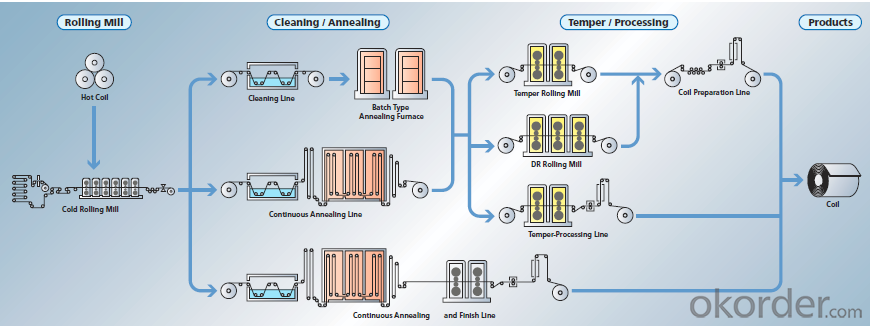
4. Usage Scope
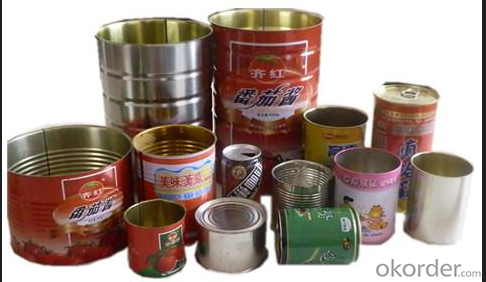
5. Our euxport market
our tinplate has been popularly exported to more than 30 countries, including Asia, Europe countries, Gulf area, Sounth America, Northe & South Afric etc.
6. FAQ
a. what’s your company name?
our company named CNBM international corporation, we are both one large state owned company and tinplate supplier in China
b. where your mill situated?
Our head office is in Beijing, while our mill in Hebei province.
c. how about the delivery time?
usually 55~65 days after receipt advance payment or original LC;
d. what payment term you accept?
Our payment term is very feasible, such as TT, DP, LC at sight, LC after sight etc.
e. can you offer MTC?
Of course, we will issue MTC after each shipment, for customer reference and testing if some quality issue appears.
- Q: What are the main factors affecting tinplate coil surface finish?
- The main factors affecting tinplate coil surface finish include the quality of the tin coating, the cleanliness of the substrate, the condition of the rolling mill, the temperature and pressure during the rolling process, the presence of impurities or contaminants, and the effectiveness of post-processing treatments such as annealing or tempering.
- Q: What are the environmental impacts of producing tinplate?
- The environmental impacts of producing tinplate include the extraction of raw materials, such as tin and steel, which can lead to habitat destruction and soil erosion. The manufacturing process involves high energy consumption and emissions of greenhouse gases, contributing to climate change. Waste generation, such as water pollution and hazardous byproducts, can also pose risks to ecosystems and human health. Additionally, the transportation and disposal of tinplate products may further contribute to carbon emissions and waste management challenges.
- Q: How is tinplate coated with metallic coatings?
- Tinplate is coated with metallic coatings through a process called electroplating, where a layer of metal is deposited onto the tinplate surface using an electrolytic bath. This bath contains ions of the desired coating metal, which are attracted to the tinplate and form a thin and uniform layer through the application of an electric current. This electroplating process helps to enhance the durability, corrosion resistance, and aesthetic appearance of the tinplate.
- Q: How does tinplate packaging protect against moisture and oxygen?
- Tinplate packaging creates a protective barrier against moisture and oxygen due to its inherent properties. The tin coating on the steel substrate acts as a reliable shield, preventing the entry of moisture and oxygen into the packaged contents. This barrier ensures the preservation and freshness of the product, extending its shelf life and preventing spoilage or degradation caused by exposure to these elements.
- Q: Advantages and disadvantages of tinplate packaging
- Because of these properties, so can provide a besides the heat, completely isolated from the closed system of environmental factors, avoid color food because of light, oxygen, moisture and deterioration, nor because of aroma through and become weak or affected by environmental pollution through the smell and taste, stability is better than that of other packaging materials of food storage. Vitamin C save the highest rate, nutrient retention is the best. International environmental management standards will be implemented soon based on ISO-14000, has the advantages of low pollution, tin recycling, resource characteristics, in the future packaging applications, will have a broader space for development.
- Q: What are the advantages of using tinplate for aerosol cans?
- Some advantages of using tinplate for aerosol cans include its durability, corrosion resistance, and ability to maintain product quality. Tinplate cans offer a longer shelf life for aerosol products as they prevent air and moisture from entering the can, ensuring the product remains fresh and effective. Additionally, tinplate cans are lightweight, making them convenient for transportation and storage. They are also recyclable, contributing to sustainability efforts.
- Q: What are the benefits of using tinplate for electrical components?
- Using tinplate for electrical components offers several benefits. Firstly, tinplate is corrosion-resistant, which helps to protect the components from moisture and other environmental factors that could lead to damage or malfunction. Secondly, tinplate has excellent conductivity, ensuring efficient and effective electrical flow within the components. Additionally, tinplate is a lightweight and durable material, making it ideal for use in electrical applications. Furthermore, tinplate is easily recyclable, making it a sustainable choice for manufacturers. Overall, utilizing tinplate for electrical components enhances their performance, longevity, and environmental sustainability.
- Q: Does tinplate affect the taste or quality of food?
- Yes, tinplate can affect the taste and quality of food to a certain extent. Tinplate is a type of steel coated with a thin layer of tin, which serves as a protective barrier between the food and the metal. However, if the tin coating becomes damaged or compromised, it can lead to the transfer of metal ions into the food, resulting in a metallic taste and potentially affecting the quality. Therefore, it is crucial to ensure the integrity of the tin coating to maintain the taste and quality of the food.
- Q: How big is the difference between tinplate and stainless steel 316L?
- 316L is a kind of austenitic stainless steel with excellent corrosion resistance. The tinplate is not comparable. 316L is superior to tinplate in appearance, corrosion resistance, heat resistance and strength. Of course, the price is much higher than that of tinplate.
- Q: Can tinplate packaging be used for pharmaceutical products?
- Yes, tinplate packaging can be used for pharmaceutical products. Tinplate is a commonly used material in the pharmaceutical industry due to its durability, corrosion resistance, and ability to protect products from light, moisture, and external contaminants. Additionally, tinplate packaging provides an excellent barrier to oxygen and maintains the quality and integrity of pharmaceutical products.
Send your message to us
Tinplate For Biscuits Cans, MR/SPCC Material,Prime Grade
- Loading Port:
- Tianjin
- Payment Terms:
- TT OR LC
- Min Order Qty:
- 25 m.t.
- Supply Capability:
- 41000 m.t./month
OKorder Service Pledge
OKorder Financial Service
Similar products
Hot products
Hot Searches
Related keywords
